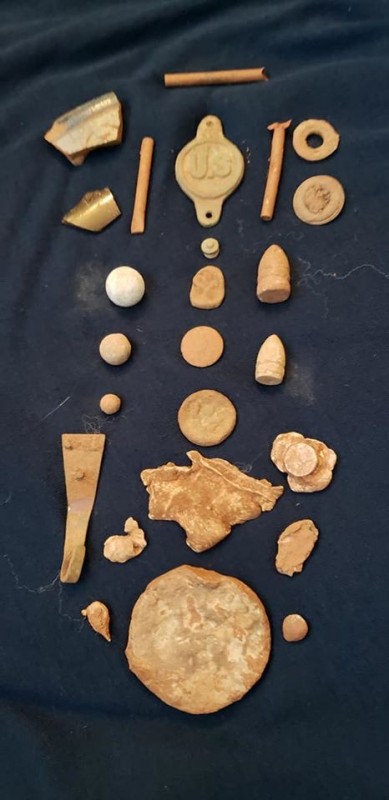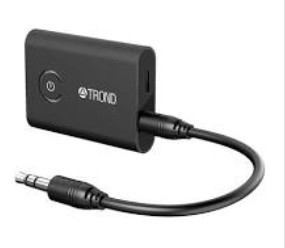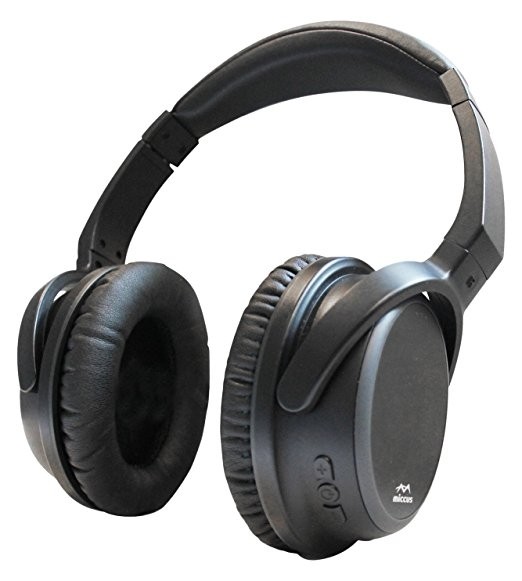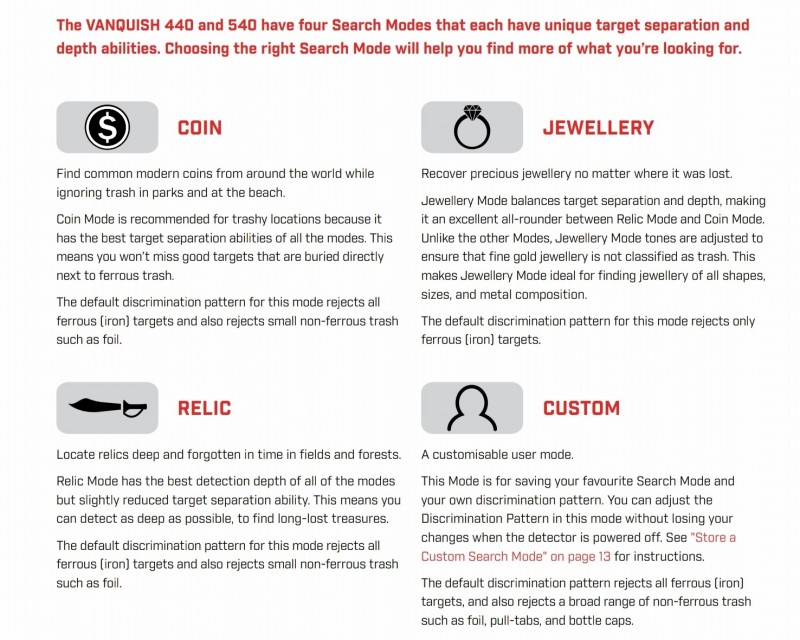-
Posts
6,114 -
Joined
-
Last visited
-
Days Won
32
Content Type
Forums
Detector Prospector Home
Detector Database
Downloads
Everything posted by Chase Goldman
-

Could Not Make Eqx To See The Target
Chase Goldman replied to nordic's topic in Minelab Equinox Forum
Air actually has the opposite effect than what you are describing. It is a very complex situation, but the bottom line is that test configuration is likely more limiting than in the field. Do you mean time and frequency domains here? Did you verify that the signal could not be picked up at ground level too or is this merely anecdotal that you found you were only picking up deeper targets in the tall grass. Furthermore, the vegitation could be signifying or contributing to a lowering of the soil mineraluzation properties. -

Vanquish Reports Show More Solid Vdi Numbers
Chase Goldman replied to Tometusns's topic in Minelab Metal Detectors
Simon - can you provide each detector’s mode/setting information so the comparison can be put in the proper context. I can have wildly varying TID stability results on an individual target depending on the Equinox setttings and mode selected. I deal with similar challenges as you when running side-by-side testing in my yard (roofing nails, etc) -

Help Needed On Equinox 600 For Culpepper Hunting
Chase Goldman replied to RME's topic in Minelab Equinox Forum
There are no magic settings for Equinox in Culpeper. The Equinox will struggle with the high mineralization as much as any other VLF machine when it comes to depth and target identification. All but the shallowest of targets will ID as iron and the problem with that is 1) there is a lot of actual iron there and 2) there are not many shallow keepers left there. The advantage Equinox brings to the table is mode versatility. The first thing I would do is bring along or get your hands on some test targets (minie balls (dropped and fired), brass military buttons, brass knapsack hooks and gromnets) bury them and see what settings get you the best depth and strongest, repeatable signal (forget target ID at this point) and train your ear on the audio. I would start with Park 2 or Field 2 (optimised for mid conductors which most relics are comprised of - lead and brass) at the default settings 2, 5 or 50 tones as you see fit (I personally would go with 2 tones as your dig decisions will basically come down to ferrous vs. non-ferrous and signal repeatability). Ground balance and use all metal (horseshoe), vary sensitivity and recovery speed and see how the target signals respond audibly. Use the settings that provide the best audio for you and go for it. Dig all repeatable signals. You will dig a lot of iron, but the more targets you dig per unit time, the better chance you will also dig a few keepers. One high risk, high reward "trick" is to experiment with the beach modes. The advantage of the beach modes is that they dial back transmit power in the presence of high mineralization. This can actually clean up scratchy or fuzzy signals that result when the transmitted field is distorted by ground mineralization (of course raw depth may also be reduced but it is a wothwhile trade if effective ID depth is improved). Another counterintuitive trick is to lower senstivity in the presence of thick iron. This keeps the iron from desensitzing the coil edges and may help you better detect shallow non-ferrous otherwise masked by the iron junk. Other advice - pick a small patch of ground ( 10 to 20 yards square) and pound it relentlessly before moving on. You'd be surprised at how many targets might be in that patch. If the hits are few, move on to a new patch. The wooded areas tend to have less mineralization than the crop fields, so you might have better luck with a vlf there. My final advice is to see if you can borrow or rent a PI detector (GPX, ATX, or TDI) if at all possible as you will gain a huge depth advantage. I have let folks borrow or rent my ATX if they only have a VLF and it has helped them snag some good relics. Another thought is that if you do have a detector (even a VLF) that you know inside and out, you might want to go with that rather than attempting to learn the Equinox there. Experience with your machine will trump the marginal enhanced performance Equinox might bring to the table with the severe conditions you encounter there. I am attending DIV this spring so if you need any additional advice or want to meet up just PM me here. If you are not attending DIV, no problem, PM me anyway if you have questions on detecting in Culpeper. It is a world class detecting challenge but the payoff can be the find of a lifetime. Snagged these relics there last fall using a GPX, Deus, and Equinox. -

Looking At GPS With Topo Maps ?
Chase Goldman replied to KD0CAC's topic in Detector Prospector Forum
Ok, you are kind of making mountains out of mole hills regarding the problems you list (e.g., regarding always on app location permissions, you can always rescind them when you want to; regarding in the field charging - robust, high capacity low cost power banks are readily available and you can even invest in a solar cell for extended wilderness excursions, removable phone batteries are not required). Downloading maps to the device BEFORE you are off the grid has been previously discussed. None of these roadblocks you cite are show stoppers or insurmountable. Perhaps a bad assumption that everyone has a smart cell phone with GPS nowadays, so if that is too big an investment, you can get one of several dedicated Garmin or similar GPS units with built-in and upgradable topo maps. I use my phone in the field all the time with a protective case and screen cover easily holds up to the abuse. I have used the following apps: I have used Onx maps for property lines and detecting site permission location and for tracking site coverage while detecting. Caltopo is a great open source custom electronic topo map creator and electronic GPS waypoint tracker. You can generate and electronically save or print out custom topo maps as well. I don’t use these for locating mining claims but I see no reason they can’t be used for that purpose as well. HTH ps You seem to be highly resistant to what I consider helpful and reasonable suggestions. Perhaps we are all just missing the point in what you are really asking for or what you envision as a useful interface (not sure you even want an electronic interface). If that is the case, my apologies for misinterpreting your request. -

Equinox Detecting In Pinpoint Mode
Chase Goldman replied to Yellowstone's topic in Minelab Equinox Forum
Good stuff. Yeah, if you are getting that overload indicator than transmit power is being automatically dialed back and that happens in both beach modes (worse on Beach 2 because transmit power is dialed back from the start, compared to Beach 1, so overload, reduces it even further). Pinpoint transmit power is not dialed back and so it is unaffected by the black sand issues that affect the Beach modes. Glad you started this topic. Now I have to experiment on two aspects of Pinpoint mode. 1 - As a limited, modulated search tool in high mineralization patches. 2 - To determine the impact of the GB setting on Pinpoint mode sensitivity as noted in this thread started by Jeff McClendon. -

Important Update On Miccus Sr-71 Headphones
Chase Goldman replied to Steve Herschbach's topic in Minelab Equinox Forum
BTW, another issue I have found is that the ML and Miccus phones allow you to set up 2 profiles so that the phones can pair with both the detector and also with your cell phone should you choose to do that. ML even references that in the manual. I have found that can sometimes be problematic if the phones decide to connect with your cell phone FIRST then sometimes they become invisiible to the Equinox and will not reconnect even if previously paired. Sometimes folks don't realize that they have paired the headphones with their cell phones and I have had to try to help folks unscrew that situation. Just another reason to keep it simple out there when using the wireless detecting accessories unless you really know your away around bluetooth pairing and some of the intricacies. When it works it is great, when it doesn't it can be a real source of frustration in the field. -

Important Update On Miccus Sr-71 Headphones
Chase Goldman replied to Steve Herschbach's topic in Minelab Equinox Forum
That confirms what I and others (like Steveg) suspected based on side-by-side audio comparisons between the Miccus and ML Phones. -
No problem. Forgot to mention that the tiny matchbook size BT- Duo module just easily tucks out of the way into my GPX control box cover while detecting. Module Battery lasts for 6 to 8 hours of swing time (I turn it off during breaks to conserve the tiny battery, I also carry a backup module for marathon hunts and can always just go wired with the Miccus phones in passive mode plugged directly into the GPX battery module jack using a longer audio patch cable in an "emergency" if all else fails).
-
Don't know the answer to the first question (other than at least as deep as the motion modes), but with respect to the second, ORX only has pinpoint as its one non-motion mode.
-

Equinox Detecting In Pinpoint Mode
Chase Goldman replied to Yellowstone's topic in Minelab Equinox Forum
Good stuff, Yellowstone. I can see where PP may help in a concentrated black sand patch as another tool in the toolkit, but only in small patches like you are using it rather than in a wide general search. Glad Beach 1 helped in the wet sand. I would also vary recovery speed some just to see the effect. Intuitively, the "lower" speed of 4 (wouldn't want to go much lower than that in wet sand or things might get chatty) would tend to give better raw depth, but counter intuitively, I have found that higher speeds (6-7) might clean up a scratchy signal or wobbly target ID. As with all detector settings - Your Mileage May Vary. Good luck and HH. -

Equinox Detecting In Pinpoint Mode
Chase Goldman replied to Yellowstone's topic in Minelab Equinox Forum
Thanks for the addional info. Is Beach 1 not stable there? That would be my choice, as it would punch a little deeper than Beach 2. I would bounce that off pinpoint to see if that does any better. Continuously hunting in pinpoint would personally drive me bonkers, so if there was any alternative...I'd take it. -

Equinox Detecting In Pinpoint Mode
Chase Goldman replied to Yellowstone's topic in Minelab Equinox Forum
Why were you in Beach 2 (salt surf/shallow water) vice Beach 1(wet salt sand)? Can't tell your hunting conditions (e.g. were you in the water?) based on your writeup. Beach 2, to maintain stability, has reduced transmit power vs. Beach 1 resulting in some potential depth loss. Both will dial back transmit power in black sand. Pinpoint will not dial back and it is a non-motion mode. I have no Idea what frequency it is using to transmit). Also, need more information regarding depth of the missed targets and how did you determine they were missed in the first place (e.g., went over the area in Beach then pinpoint? Compared Beach with Pinpoint hits? Etc.) Gb settings? Thx. -
Chuck - Haven't gotten it yet. Just seriously considering it based on user reports on mid conductor performance.
-
The Vanquish is doing very well on small gold and nickels, ok on lead in these real world tests (better than I would have expected for a pure beach profile), so I suspect ML has done some further optimization on Multi IQ here and I may just get my hands on a Vanquish to see how it does for relic hunting in mild and hot soils with the two coils (540).
-

Important Update On Miccus Sr-71 Headphones
Chase Goldman replied to Steve Herschbach's topic in Minelab Equinox Forum
The Miccus product note notwithstanding, DP forum member Steveg (of Steve's Detector Rods) has run a test and has successfully paired a recently purchased BT 5.0 version of the Miccus SR-71's with Equinox as documented here). It is a mixed bag, to be sure, so as always in these tech compatibility situations, your mileage may vary, so buyer beware. If you want to roll the dice, make sure you purchase from a vendor who accepts returns. There are still alternatives out there too such as similar model clone phones from Trond. -
Update: I tested the new 5.0 version of the Trond BT- DUO module and it connects as APTX LL (+ symbol) and fortunately was not defective like Dan's. It's a keeper for me.
-
I use the Trond Rx/Tx module below (Model Trond BT-DUO) , a short 1/4" plug to 1/8" plug patch cable to plug into the GPX battery/audio amplifier module and my Miccus SR-71 APTX APTX LL wireless headphones which serve double duty as my Equinox wireless phones (they have better audio than the stock ML branded phones for some reason, even though they are supposedly identical rebranded versions of the same design). HTH
-
Thanks for the plots. Good info. I think (speculating here) from an Equinox "mode" perspective, Vanquish pretty much stays in one "mode" (i.e., a single Multi IQ search profile in Equinox terms - may eventually be verified by further scope tests with Vaquish switched into baits various modes) and the Vanquish "modes" (coin, jewelry, relic) are differentiated only by underlying changes in recovery speed (not user adjustable on Vanquish, unlike Equinox) and the associated default discrimination settings. This is based simply by the way ML describes the modes for Vanquish vs. Equinox in the user guide (and excerpted below). The engineering assessment of the output waveform provides additional evidence to support that conclusion which was discussed previously here.
-
Yeah, but that looks most like like beach mode spectrum vs. any of the other mode frequency spectrums on the Equinox, that is why Vanquish is stable on a salt beach. If you read the description of beach mode in the Equinox manual, it is the lowest frequency weighted mode. The key is how much Vanquish is processing the 18.2kHz/39Khz signals. Nobody knows. Put another way, relic hunting with Vanquish is probably very similar to relic hunting in Beach 1 mode on the Equinox. Not my ideal mode choice, but it will find some relics and may have some advantages in highly mineralized soil if it also automatically dials back transmit power like on the Equinox but there is no indication that it does that.
-
I didn't say "not good", I said "not ideal". It is not optimal (compared to Equinox) due to the measured, fixed multi-frequency profile (discussed in the post previous to mine) which is weighted towards high conductors (it is effectively a tweaked Equinox Beach 1 mode equivalent, weighted towards the low frequency portion of the spectrum). This is a compromise that gives it good general purpose capability and salt-beach stability. That is why it is value priced and feature limited. If you want a multi-frequency machine that is better optimized for relic hunting whose targets are primarily mid-conductors (brass, lead), Equinox gives you more options to tweak the machine for that type of hunting (of course also at a higher price point). That being said, "not ideal" does not mean "not good" or "not capable". You will find relics with the Vanquish, but you will also likely leave some relics in the ground that are partially masked by junk/orientation or at the limit of detection that might otherwise be detected by the Equinox.
-

New Minelab Pi Announcement Date 2020
Chase Goldman replied to nugget hunter nz's topic in Minelab Metal Detectors
I want an Equinox 8000! -
The Vanquish with its Deus-like rod and stem system can be folded up in a really compact manner, quite frankly. Not go find compact, but definitely packable and can be easily hidden out of view.
-

My Simplex + Has Landed
Chase Goldman replied to Ridge Runner's topic in Nokta / Makro Metal Detectors
Fantastic response, Dilek! This kind of customer engagement whether or not it ultimately results in a change in policy (as I recognize practical business considerations come into play) is really positive. Most of the time the end user really just wants to know that the manufacturer is listening and seriously considering the issue. Thanks and makes me feel good about my decision to give the Simplex and Pulse Dive a go as my introduction to Nokta detecting products. -

New From Garrett In 2020?
Chase Goldman replied to Steve Herschbach's topic in Garrett Metal Detectors
I do too, they are the only US detector company that appears to have the resources to develop and release something innovative or at least on par with where ML, Nokta, and even XP are headed in terms of value (performance for price). But just couldn't get past their use of "new product" vice "new detector" so had to poke some fun too. -

New From Garrett In 2020?
Chase Goldman replied to Steve Herschbach's topic in Garrett Metal Detectors
New digger perhaps? They can make some improvements to their existing one.






